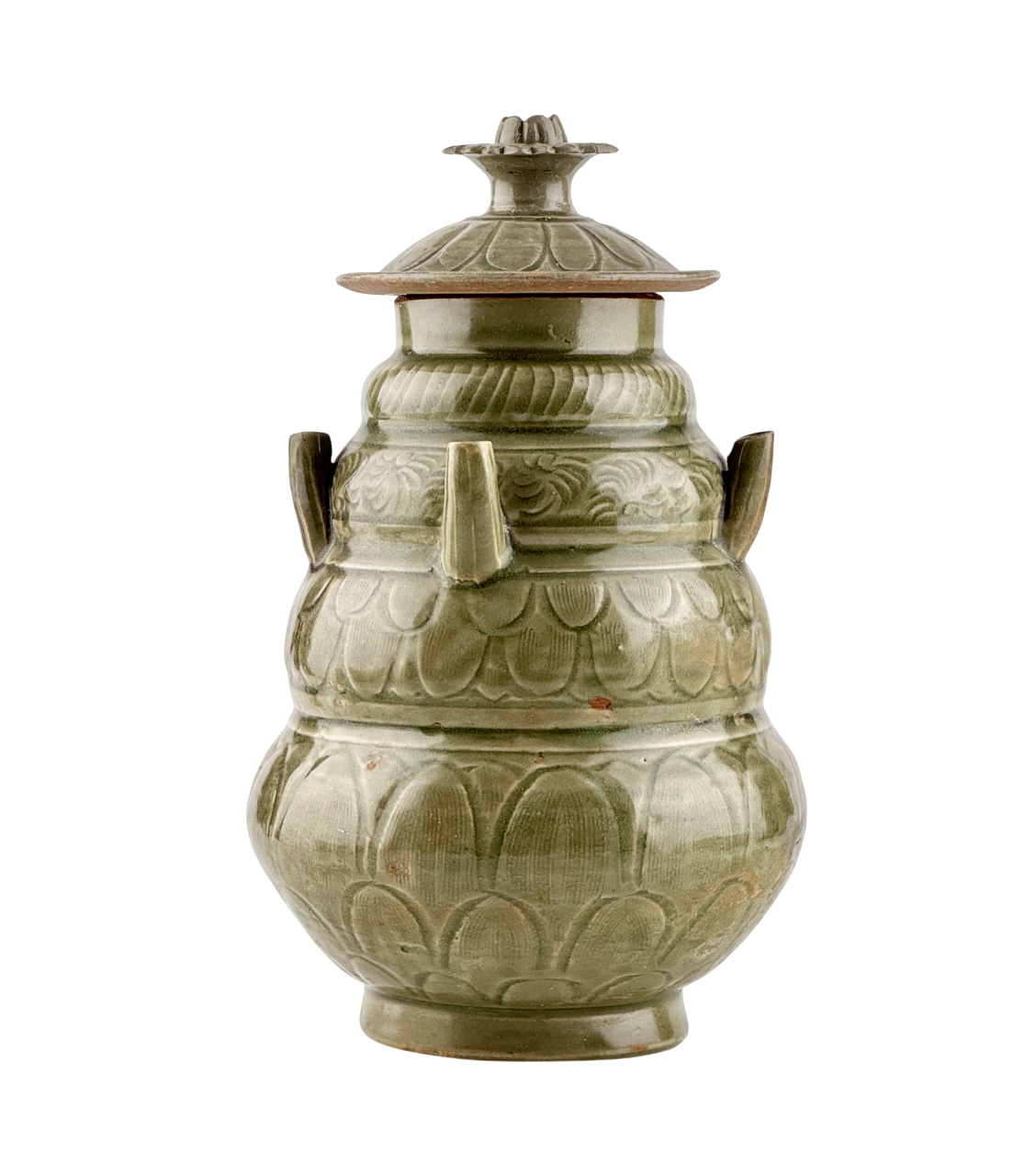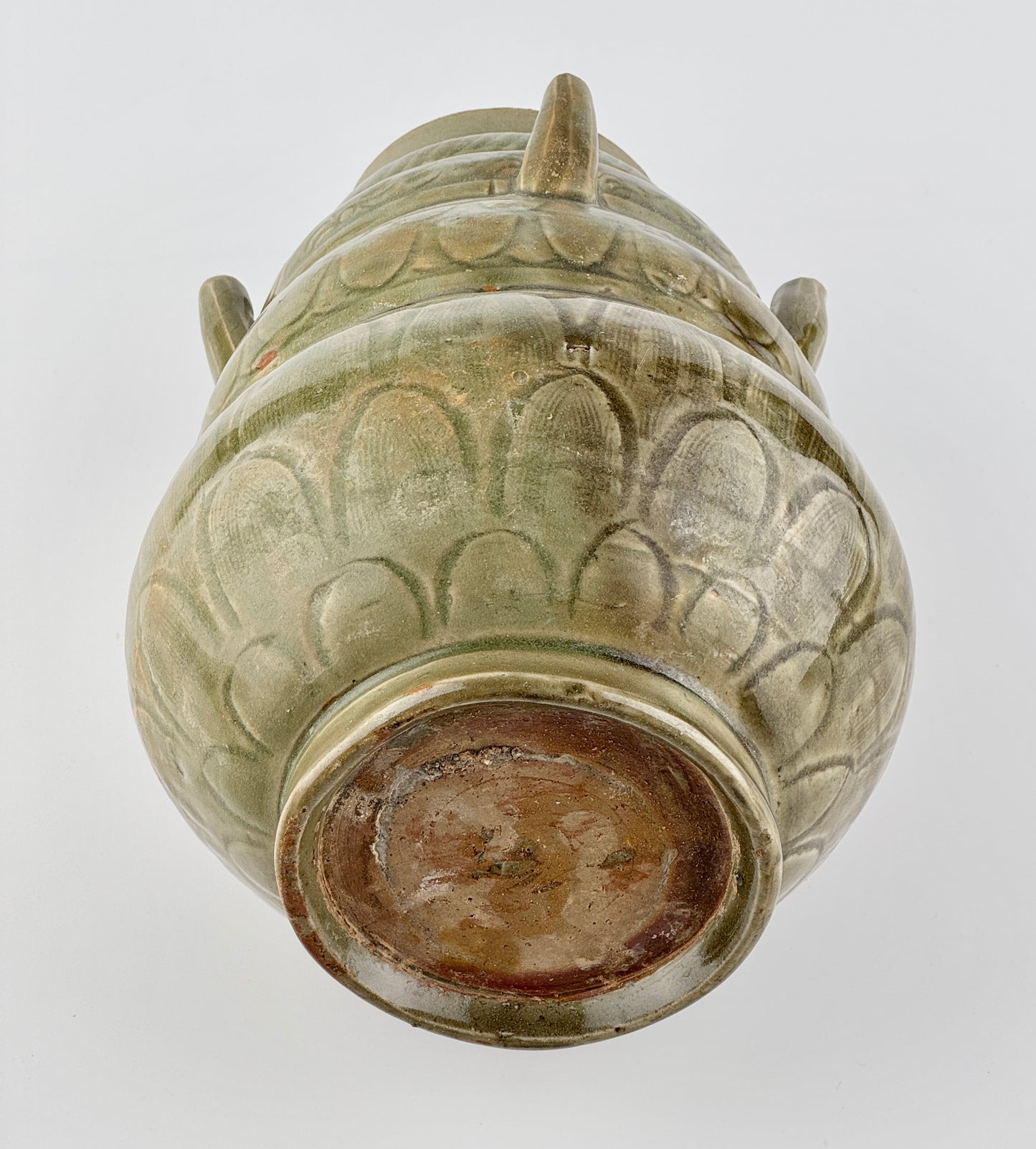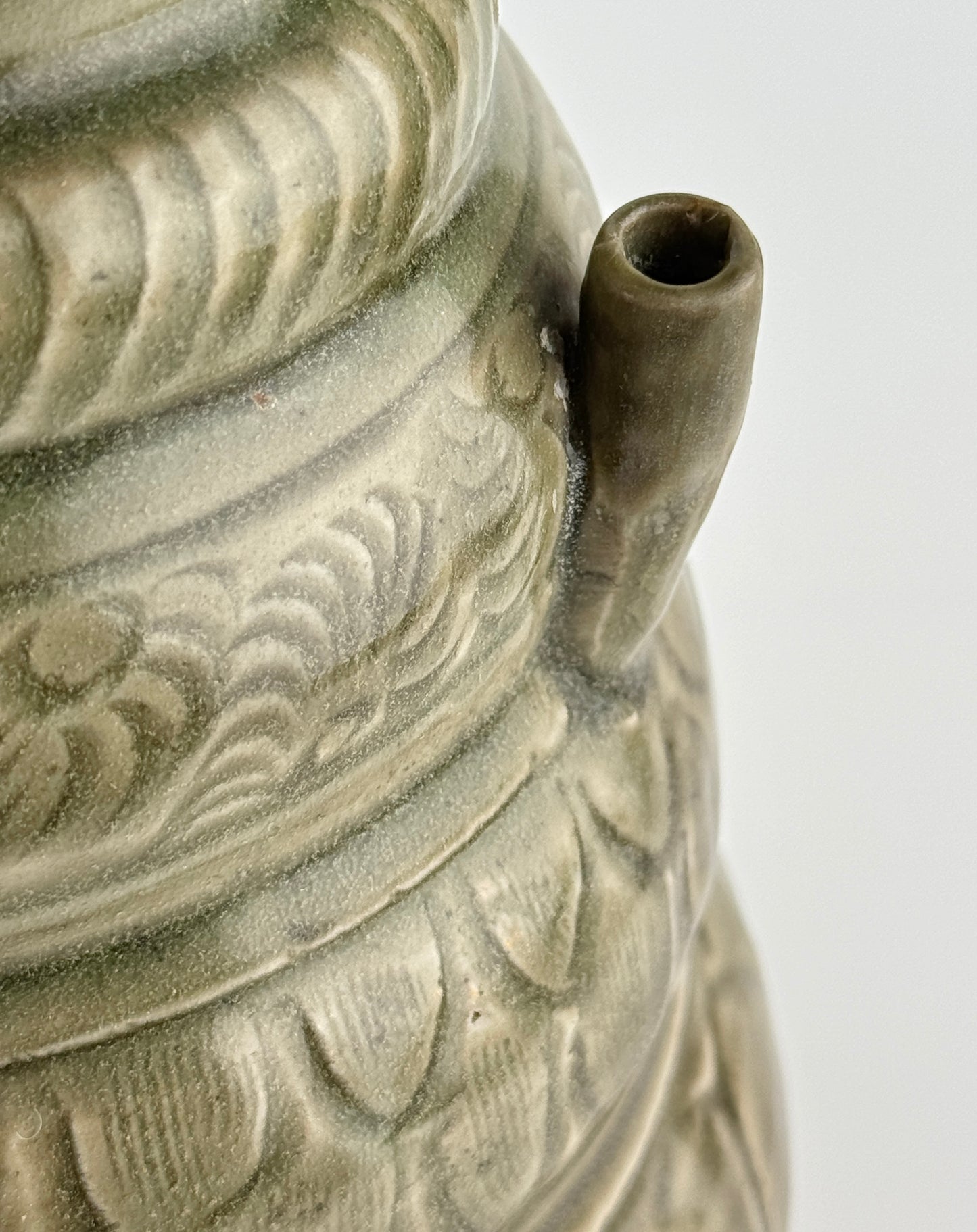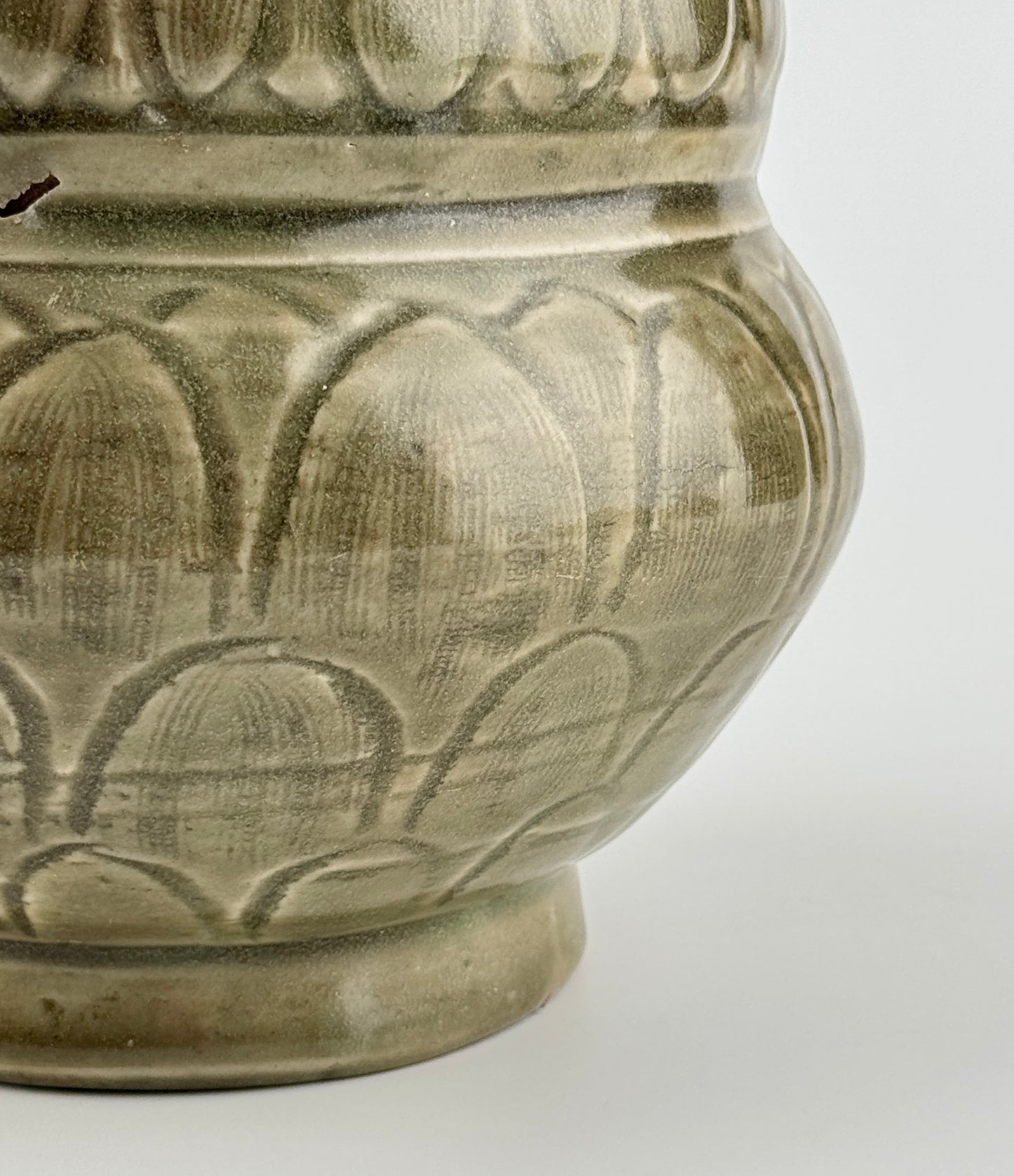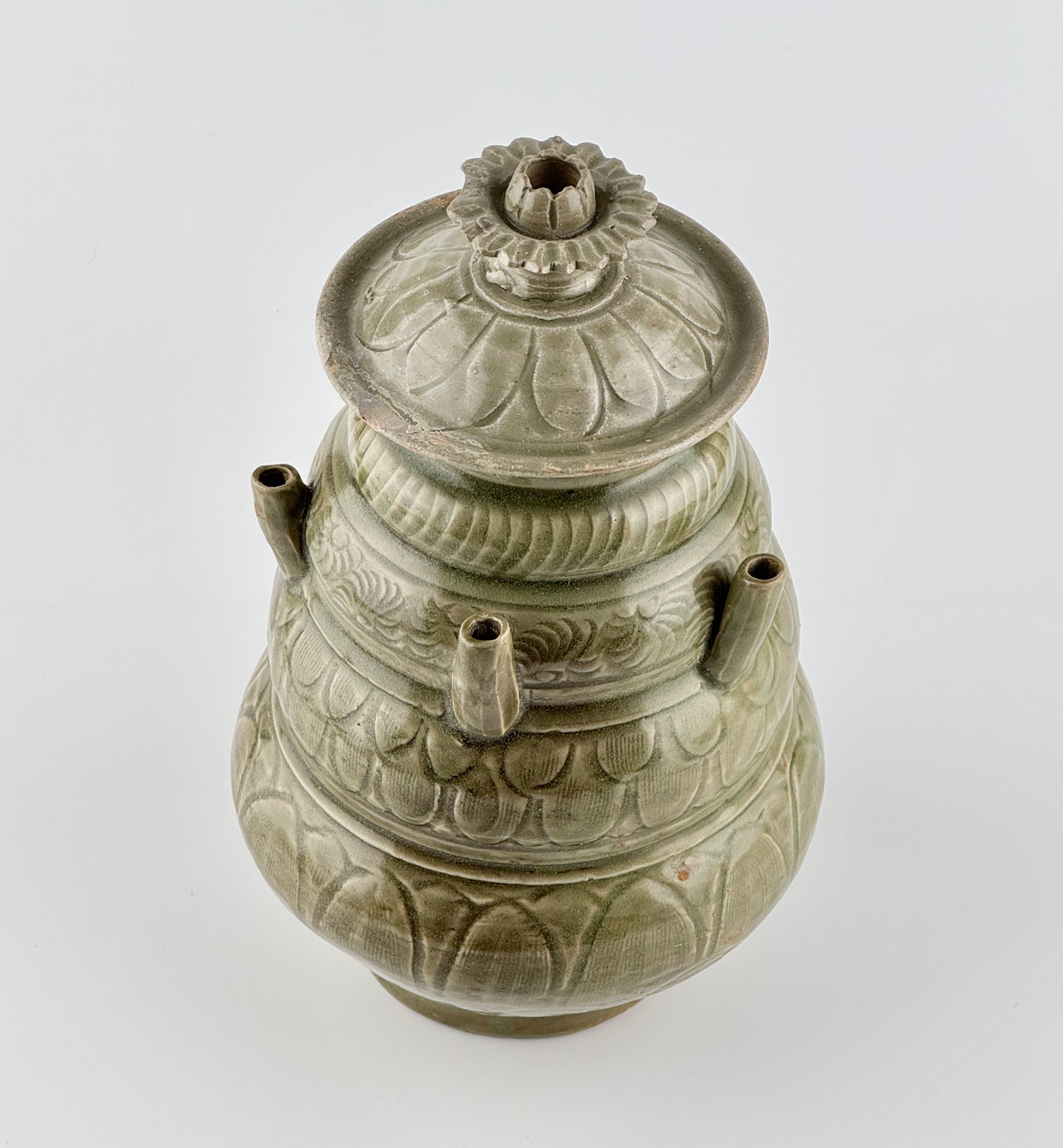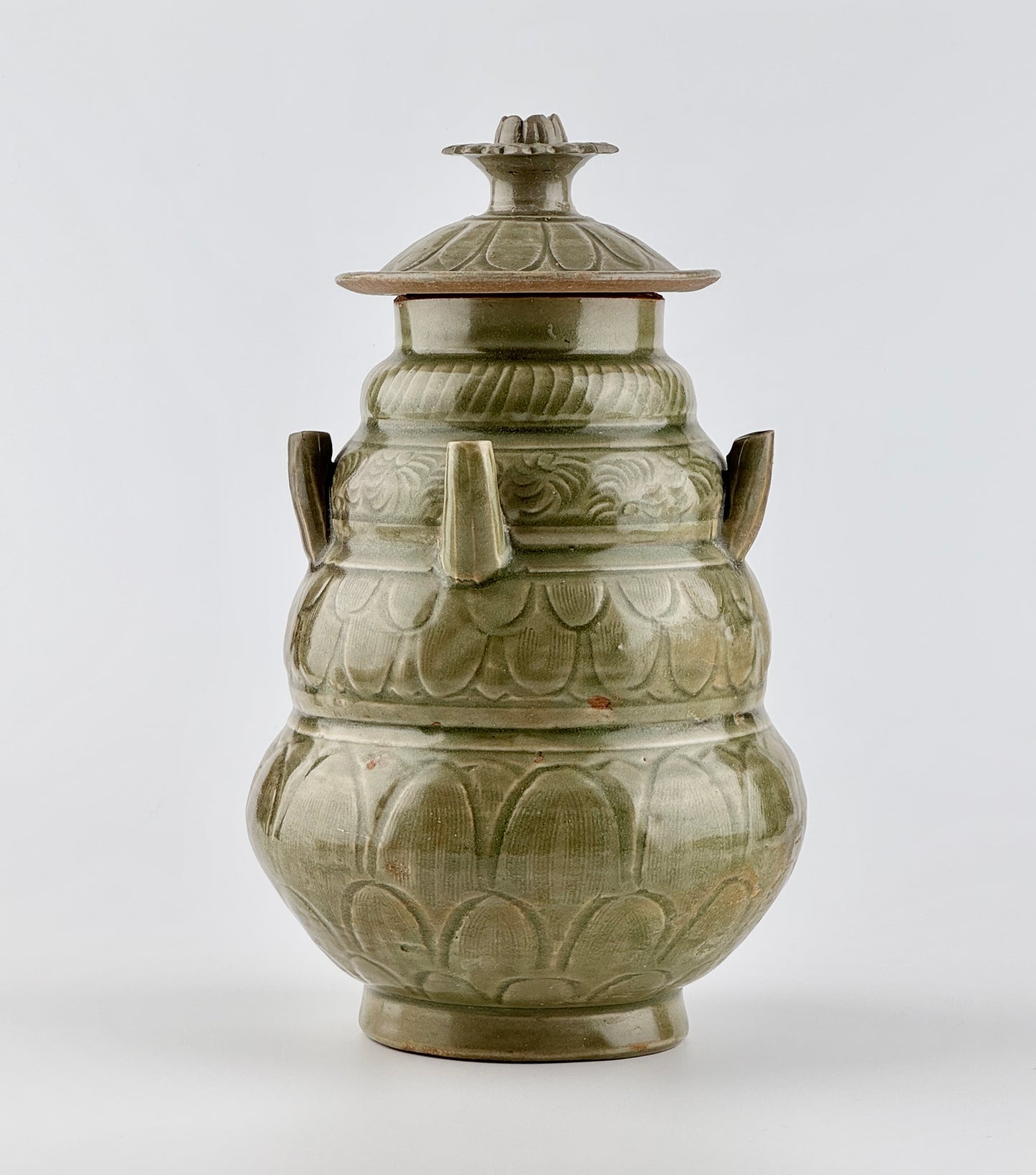AUA Oriental Art
A Longquan Celadon Five-spouted Jar, Sui-Song Dynasty
A Longquan Celadon Five-spouted Jar, Sui-Song Dynasty
Couldn't load pickup availability
The jar features a round body with well-proportioned four distinct tiers and a short, stable foot. The surface is coated in a deep green Longquan celadon glaze, showcasing the sprout-like finial on the lid and the detailed carved leaf motifs. Five spouts are arranged around the shoulder, adding both aesthetic and functional value. The glaze displays a rich depth of color, with one side showing signs of oxidation due to burial. The natural wear and crackles in the glaze contribute to its antique charm and timeless appeal.
Period : Sui-Northern Song Dynasty
Type : Celadon
Medium : Longquan ware
Dimension : 28.5 cm(Height) x 8cm(Mouth Diameter)
Provenance : Acquired in late 1990s from Hongkong
Reference :
1) Christies New York 10 MAY 2018 <The Collection of Peggy and David Rockefeller: Travel and Americana> - Lot 971
(Price realised : 13,750 USD / Type : Closely Related)
https://www.christies.com/lot/a-longquan-celadon-five-spouted-jar-and-cover-6134978/?intObjectID=6134978&lid=1
2) Shanghai Museum -龙泉窑青釉五管瓶, 北宋
(Type : Closely Related)
https://www.shanghaimuseum.net/mu/frontend/pg/article/id/CI00015933
Share
